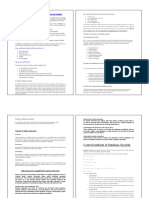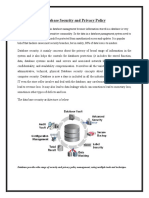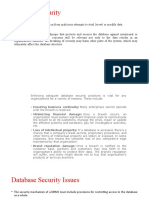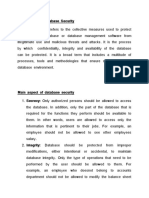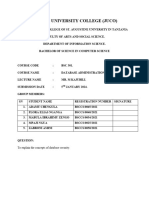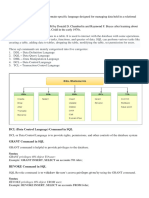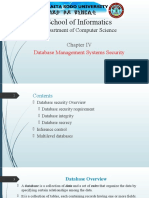0% found this document useful (0 votes)
14 views12 pagesDatabase Security Architecture and Concepts
The document discusses database security architecture, emphasizing the importance of safeguarding confidentiality, integrity, and accessibility of databases and their associated systems. It outlines common threats such as insider dangers, human error, and software vulnerabilities, while also detailing security measures like access control, encryption, and auditing. Additionally, it covers the significance of application security and the need for robust data protection tools to mitigate risks and ensure compliance.
Uploaded by
grandtotalassociationCopyright
© © All Rights Reserved
We take content rights seriously. If you suspect this is your content, claim it here.
Available Formats
Download as DOCX, PDF, TXT or read online on Scribd
0% found this document useful (0 votes)
14 views12 pagesDatabase Security Architecture and Concepts
The document discusses database security architecture, emphasizing the importance of safeguarding confidentiality, integrity, and accessibility of databases and their associated systems. It outlines common threats such as insider dangers, human error, and software vulnerabilities, while also detailing security measures like access control, encryption, and auditing. Additionally, it covers the significance of application security and the need for robust data protection tools to mitigate risks and ensure compliance.
Uploaded by
grandtotalassociationCopyright
© © All Rights Reserved
We take content rights seriously. If you suspect this is your content, claim it here.
Available Formats
Download as DOCX, PDF, TXT or read online on Scribd
/ 12






